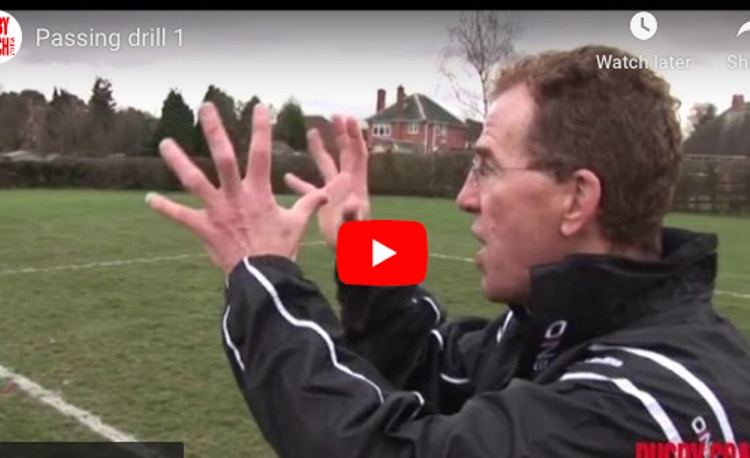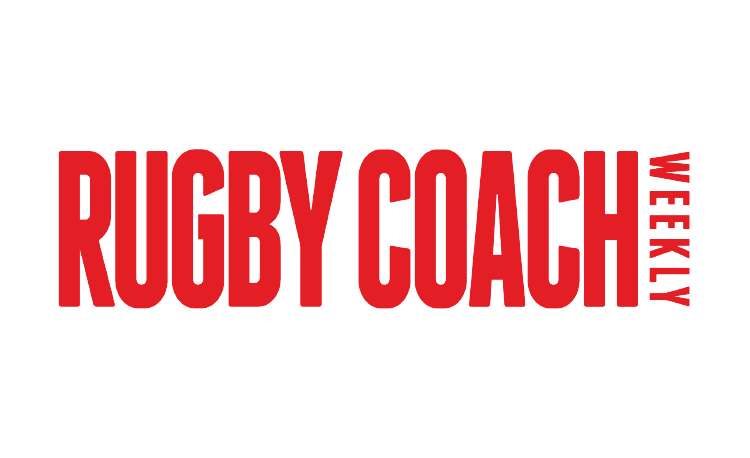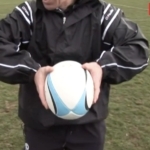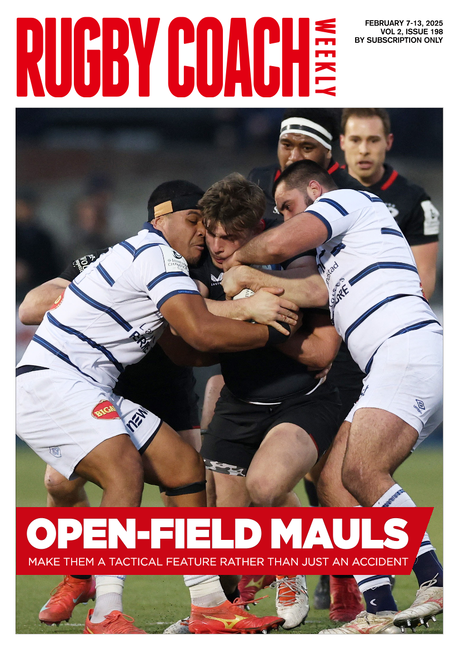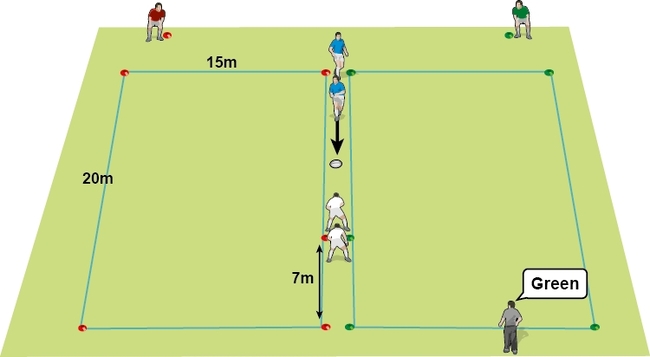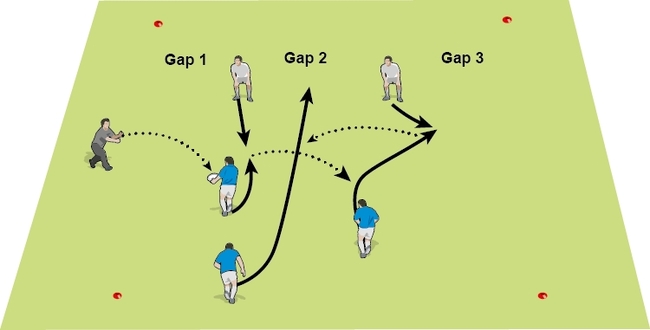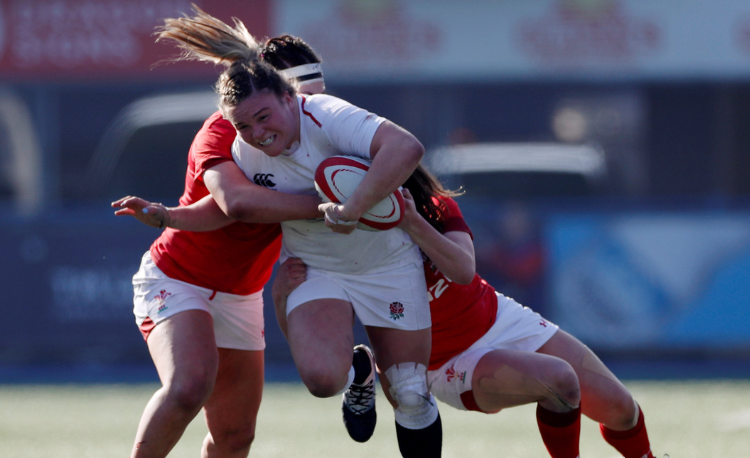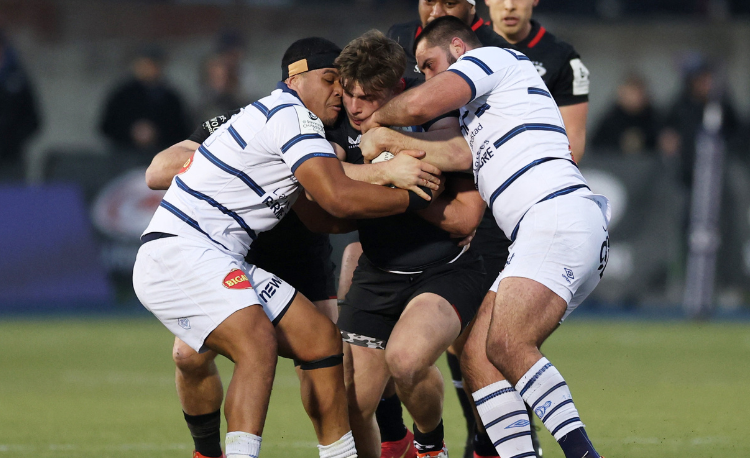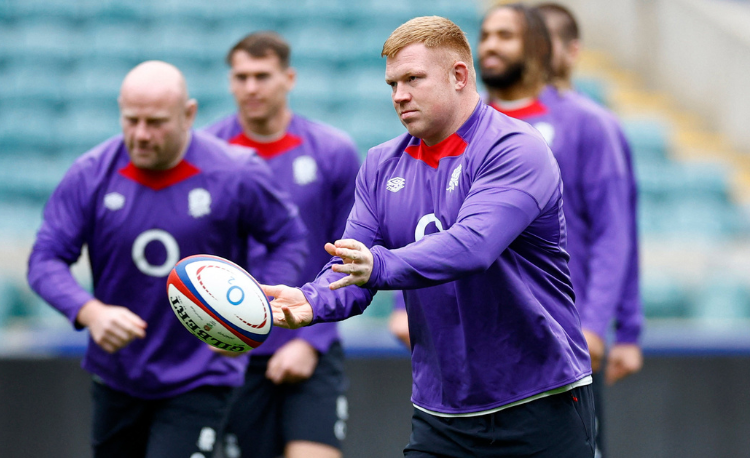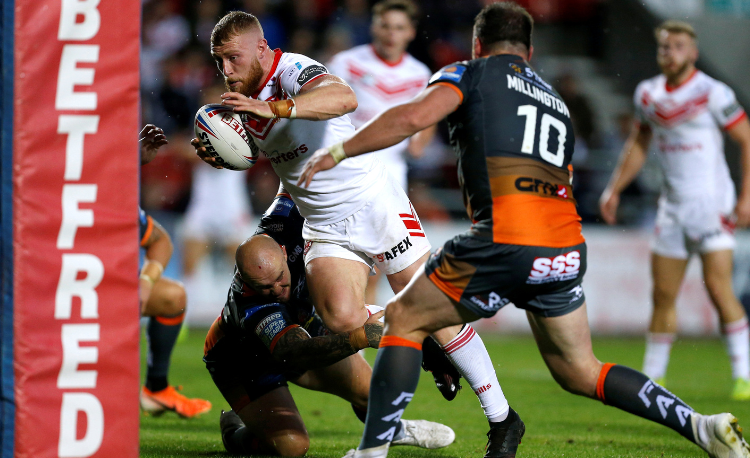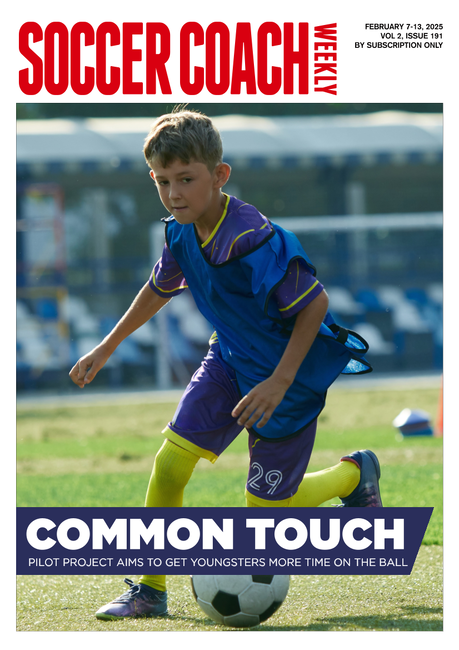Knowledge is power – passing for a reason
Passing and Handlingby Dan Cottrell
There are many ways to transfer the ball from one player to another but one of the key factors must be knowing the reasons to pass. Once understood, players will pass more effectively.

The first principle of rugby is to “go forward” with the ball in attack. If the ball carrier has no one in front of him, then the only reason to pass is to transfer the ball to someone faster.
However, if the progress of the ball carrier is blocked, and there is a team-mate with no one in front of them, then it’s worth passing the ball.
The decision to pass is then made on the probability that there is the time and space to make that pass. These are key decisions. And handling should have these decisions in mind at all times. Running up and down the pitch passing in a neat line of four players will not replicate the real reasons to pass.
Therefore, players should spend less time spin passing the ball off their strong hand when they are static and get moving to pass the ball. And if there is no reason to pass, they should hold onto the ball until the moment arises.
A good way for players to check that they are passing well is to get them to pass hard. This means moving the ball quickly through the air to the intended receiver. Of course if the receiver is only a metre away, then there is no point. Moving the ball this short distance doesn’t require as much technical expertise. A short pass is more by feel than technique.
In training, players should be passing hard to their receivers with these benefits:
“Soft hands” will be the preserve of short passes in tight areas. Here, fingertip control is more important.
In training, clap at the ball carrier before you want to receive a pass. The passer will have a cue to pass, and your hands will be in a good place to catch the ball.
Spread the hands over the fattest part of the ball, even if you are thinking of spin passing. You should be able to go from one hand to two hands to the other hand at full pace. Often passing happens when you are unbalanced, so being in full control of the ball is good.
When you pass the ball, the last sensation of feel between ball and your body should be through the fingers. Practise passing short distances with your eyes closed to understand how this touch works.
Where the hands end up tends to be where the ball goes. Unless you are imparting a huge amount of spin on the ball, then finish the hands towards the target.
Get others to watch your hands in training to help you work out whether you finishing in the right positions. Low passes often happen because the passer has “dropped” his hands.
Very short passes can be executed with just the arms and wrists flicking the ball towards the receiver. Longer passes need the whole body to work together to generate more power. Longer passes need the body to be shaped. The hips need to turn at 45 degrees to allow the shoulders to turn to face towards the target.
Here are some videos from Tosh Askew on improving passing:

The first principle of rugby is to “go forward” with the ball in attack. If the ball carrier has no one in front of him, then the only reason to pass is to transfer the ball to someone faster.
However, if the progress of the ball carrier is blocked, and there is a team-mate with no one in front of them, then it’s worth passing the ball.
The decision to pass is then made on the probability that there is the time and space to make that pass. These are key decisions. And handling should have these decisions in mind at all times. Running up and down the pitch passing in a neat line of four players will not replicate the real reasons to pass.
Therefore, players should spend less time spin passing the ball off their strong hand when they are static and get moving to pass the ball. And if there is no reason to pass, they should hold onto the ball until the moment arises.
PASSING HARD
A good way for players to check that they are passing well is to get them to pass hard. This means moving the ball quickly through the air to the intended receiver. Of course if the receiver is only a metre away, then there is no point. Moving the ball this short distance doesn’t require as much technical expertise. A short pass is more by feel than technique.
In training, players should be passing hard to their receivers with these benefits:
- It forces the passer to follow through to the target, which in turn tends to give them a technical upside.
- A hard pass is more difficult to defend against. The defender who’s marking the passer has less time to slide off to move over to defend the new ball carrier.
- The receiver has more certainty of the flight of the ball. It will coming to them hard and flat.
- The receiver won’t have to slow down to receive the ball.
- The pass is also easier to target, because of the relative speeds of the ball carrier and receiver become less of a factor.
“Soft hands” will be the preserve of short passes in tight areas. Here, fingertip control is more important.
TIPS FOR PLAYERS
CATCH
In training, clap at the ball carrier before you want to receive a pass. The passer will have a cue to pass, and your hands will be in a good place to catch the ball.
HANDS ON THE BALL
Spread the hands over the fattest part of the ball, even if you are thinking of spin passing. You should be able to go from one hand to two hands to the other hand at full pace. Often passing happens when you are unbalanced, so being in full control of the ball is good.
FINGERS LAST
When you pass the ball, the last sensation of feel between ball and your body should be through the fingers. Practise passing short distances with your eyes closed to understand how this touch works.
FOLLOW THROUGH
Where the hands end up tends to be where the ball goes. Unless you are imparting a huge amount of spin on the ball, then finish the hands towards the target.
Get others to watch your hands in training to help you work out whether you finishing in the right positions. Low passes often happen because the passer has “dropped” his hands.
HIPS AND SHOULDERS
Very short passes can be executed with just the arms and wrists flicking the ball towards the receiver. Longer passes need the whole body to work together to generate more power. Longer passes need the body to be shaped. The hips need to turn at 45 degrees to allow the shoulders to turn to face towards the target.
Here are some videos from Tosh Askew on improving passing:
Newsletter Sign Up
Coaches Testimonials

Gerald Kearney, Downtown Las Vegas Soccer Club

Paul Butler, Florida, USA

Rick Shields, Springboro, USA

Tony Green, Pierrefonds Titans, Quebec, Canada
Subscribe Today
Be a more effective, more successful rugby coach
In a recent survey 89% of subscribers said Rugby Coach Weekly makes them more confident, 91% said Rugby Coach Weekly makes them a more effective coach and 93% said Rugby Coach Weekly makes them more inspired.
Get Weekly Inspiration
All the latest techniques and approaches
Rugby Coach Weekly offers proven and easy to use rugby drills, coaching sessions, practice plans, small-sided games, warm-ups, training tips and advice.
We've been at the cutting edge of rugby coaching since we launched in 2005, creating resources for the grassroots youth coach, following best practice from around the world and insights from the professional game.
